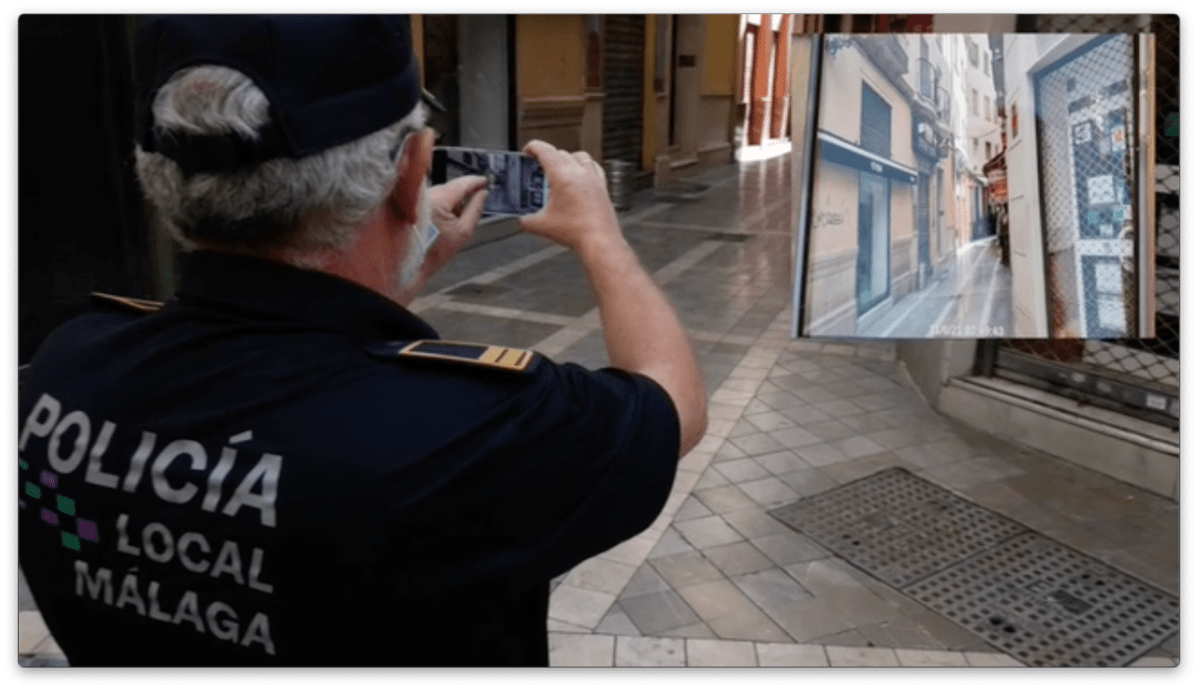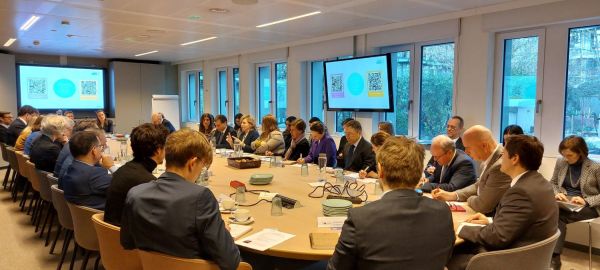Telefónica, within the framework of Red.es’ 5G Andalusia Pilots project, has successfully executed 8 of the 23 use cases working to explore and identify applications of 5G technology in the city of Malaga. Specifically, eight different use cases have been developed for the Malaga Police and the University of Malaga in sectors such as security, smart cities and education. This initiative seeks to boost the deployment of 5G networks and is one of the cornerstones of the Digital Spain 2025 strategy.
With the Malaga Police, a more efficient urban mobility management was sought, and for this purpose five use cases were developed. Two of them are related to 5G video transmissions with the police control centre; on the one hand, the local police control centre supervises, through the use of thirty fixed cameras, urban mobility in the city, and now it has been improved with a mobile camera connected by 5G to the Telefónica Network that can be placed anywhere in the city and instantly receive the image in the control centre, facilitating urban management tasks.
On the other hand, in the police control centre, the images from the police video surveillance cameras are displayed 24×7, but it was necessary to be physically there to view them. From now on, police officers will be able to connect via 5G from anywhere and at any time to view and control any of the cameras displayed at the control centre. This allows deployed police officers to have the same audiovisual information as the officers in the control centre simultaneously, allowing for better coordination of police officers.
Another two of the use cases have been applied to crowd and traffic control services using Artificial Intelligence (AI) video analytics. Through the thirty fixed cameras and 5G mobile cameras deployed in Malaga, by using AI, it is possible to control the occupation of public spaces in the city by automatically counting in real time how many people occupy the space and how many are passing through it without the need to mobilise any cash.
Finally, Telefónica has deployed a private 5G voice and video communications network for police to communicate with each other based on the latest 3GPP MCX standards. Police officers can use 5G mobiles to communicate with each other using the Walkie Talkie mode (Push to talk) or establish communications between groups of users, but with the security guarantees of their own private network.
University of Malaga: the future of education thanks to 5G
Telefónica is working with teachers at the University of Malaga (UMA) in the development of advanced education technology tools that use Virtual Reality and the virtualisation of physical devices. With these proposals, they will offer their students immersive educational experiences and access to laboratory equipment remotely with a user experience as if they were working with that equipment physically inside the university laboratories, facilitating remote access to students to educational resources in the current pandemic situation and improving the educational experience with the application of the latest technologies.
One of the three use cases based on 5G that have been carried out with the Virtual Teaching Service and the Institute of Technology and Software Engineering of the UMA has consisted of the use of a virtual world to facilitate online teaching between students and teachers where they can interact and where the teacher can make use of audiovisual resources to teach their subjects. The computer system used is Opensimulator, which allows the interaction of avatars in a 3D virtual world.
Telefónica has provided 5G access to a virtualised environment through which students can carry out practices in the laboratory remotely, facilitating access to equipment that, due to its high cost, makes it unfeasible to physically equip with dozens of units. This virtualised environment will have, on the one hand, the programming environments used in the course to run the programmes developed to access the instrument and consult the radio parameters of the private 5G deployment available in the laboratory. And another project provided to the students is the remote access to a spectrum analyser through a 5G connection. The use of 5G in these two use cases provides an independent, flexible and configurable access to the instruments available in the lab.
Finally, a service has been launched to access laboratory PCs through the 5G network using the University’s virtual campus. In this way, students can access a virtualised PC in the UMA laboratories from their workspace to carry out their practical work as if they were in front of their own computer. This avoids the concentration of students in a physical space to be able to do their practicals, as they can do them with direct access and without delays from anywhere on campus with the coverage of the 5G network that Telefónica has deployed in the Ada Byron building, on the University of Malaga campus.
David del Val, CEO of Telefónica I+D, said: “The projects carried out in Malaga have helped us to demonstrate that the application of 5G technology represents a qualitative leap for companies and public administrations and shows that it is necessary to continue researching and investing in innovation so that the country and its companies continue to advance technologically”.
For these projects, Telefónica is collaborating with Intel, Wiwynn, which provides EP100 servers for Edge Computing; Neuratum, which provides video analytics solutions with Artificial Intelligence; and Nemergent, which provides its MCX critical communications solution. In addition, these use cases have been developed within the framework of the 5G Andalusia Pilot, promoted by the Ministry of Economic Affairs and Digital Transformation through Red.es and co-financed with Feder funds.








